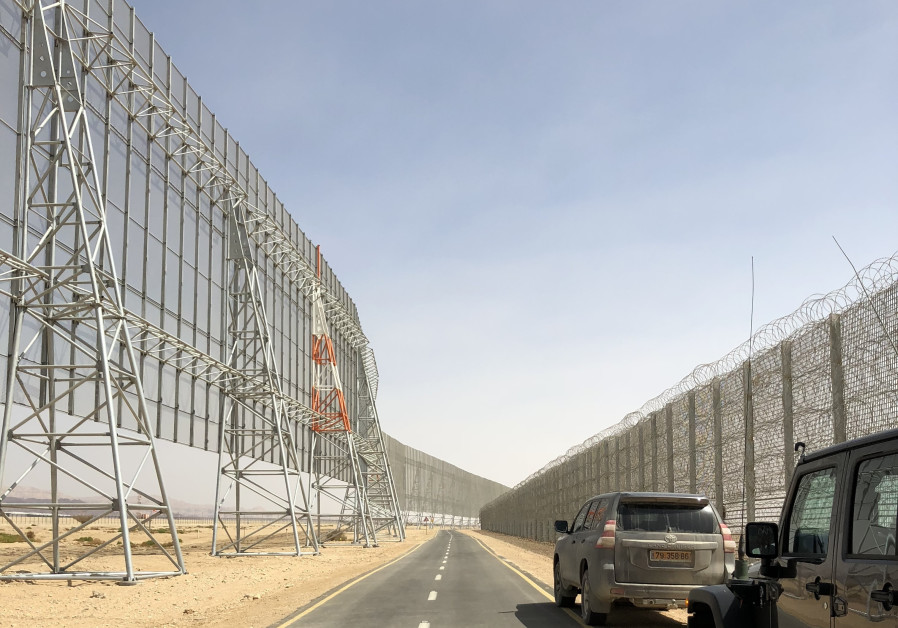The 26 meter high fence will protect Assaf and Ilan Ramon airport from Kornet missiles
o years after work began on the smart fence capable of stopping Kornet missiles aimed towards Israel’s newest civilian airport – Eilat Ilan and Assaf Ramon International Airport – the 26-meter-high fence has been completed.
The fence, which extends 4.5 km, is part of a larger 34-kilometer six-meter-high fence along the Jordanian border which runs from Eilat to Kibbutz Samar north of Timna. It features electronics, sensors and detection technology to ensure that incoming and departing planes are protected from all types of threats.
According to a senior officer in the IDF who is familiar with the project, while the Jordanian border is one of Israel’s quietest as Amman has a strong and effective army which places great emphasis on protecting its borders, a national strategic asset like an airport made the army realize that a fence such as this was needed.
“Someone may fire a missile at the new airport and then it would be gone,” he said. “This fence will stop the missiles.”
The new facility is the first civilian airport to be built in the country since the establishment of the state in 1948 and is being built in the Timna Valley, 19 km. north of Eilat. It will replace Eilat’s J. Hozman Airport located in the city itself as well as Ovda Airport located some 60 km. north of Eilat
26 meter high fence protecting Israel’s newest civilian airport in Eilat completed, May 17, 2018 (IDF Spokesperson’s Unit)
The Eilat Ilan and Assaf Ramon International Airport is expected to handle an estimated two million travelers each year and is set to open in March 2019.
A senior officer in the Defense Ministry and army’s fence-building administration said the fence is based on the model developed for those deployed on the borders of Egypt and in the Golan Heights, but in accordance with the unique topography of the Arava.
Extensive care was put into planning the fence, developed along with environmental protection authorities in such a way that it would not damage or interfere with the surrounding environment. For example, ecological cross-passages have been placed along the entire length of the fence to allow floodwater to flow and animals to pass through.
The project was carried out by dozens of contractors from the Defense Ministry’s Engineering and Construction Department, among others.
As part of the construction, the ministry cleared some 13 sq. km. of old minefields.
Similar to the barriers on Israel’s other borders, the fence includes new roads, observation towers and other security facilities.
Command centers have also been built and all relevant authorities such as the IDF, Shin Bet (Israel Security Agency), Israel Police and Home Front Command will have access to the intelligence gathered by the sensors.
In addition to protecting the airport, the fence will stop migrants, criminals and terrorists from infiltrating into Israel from Jordan.
The fence along the Egyptian border has slashed the number of illegal African migrants arriving in Israel, from 14,669 infiltrations in 2010 to 213 in 2015, and only 14 in 2016. But the number of successful infiltrations prompted authorities to raise the height of the fence from five to eight meters along a 17-kilometer stretch. There have been no infiltrations from Sinai since.




Leave a Reply
You must be logged in to post a comment.